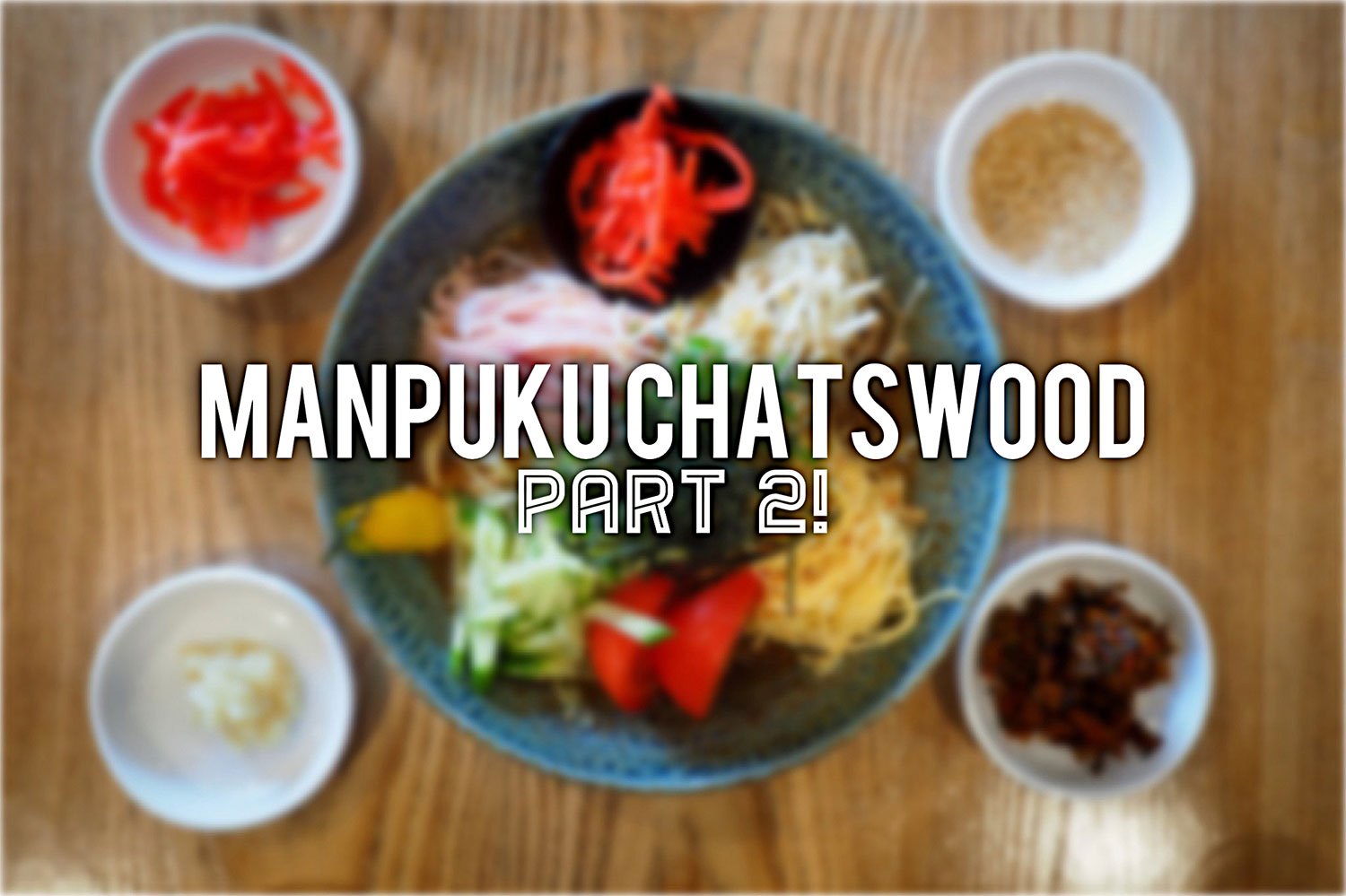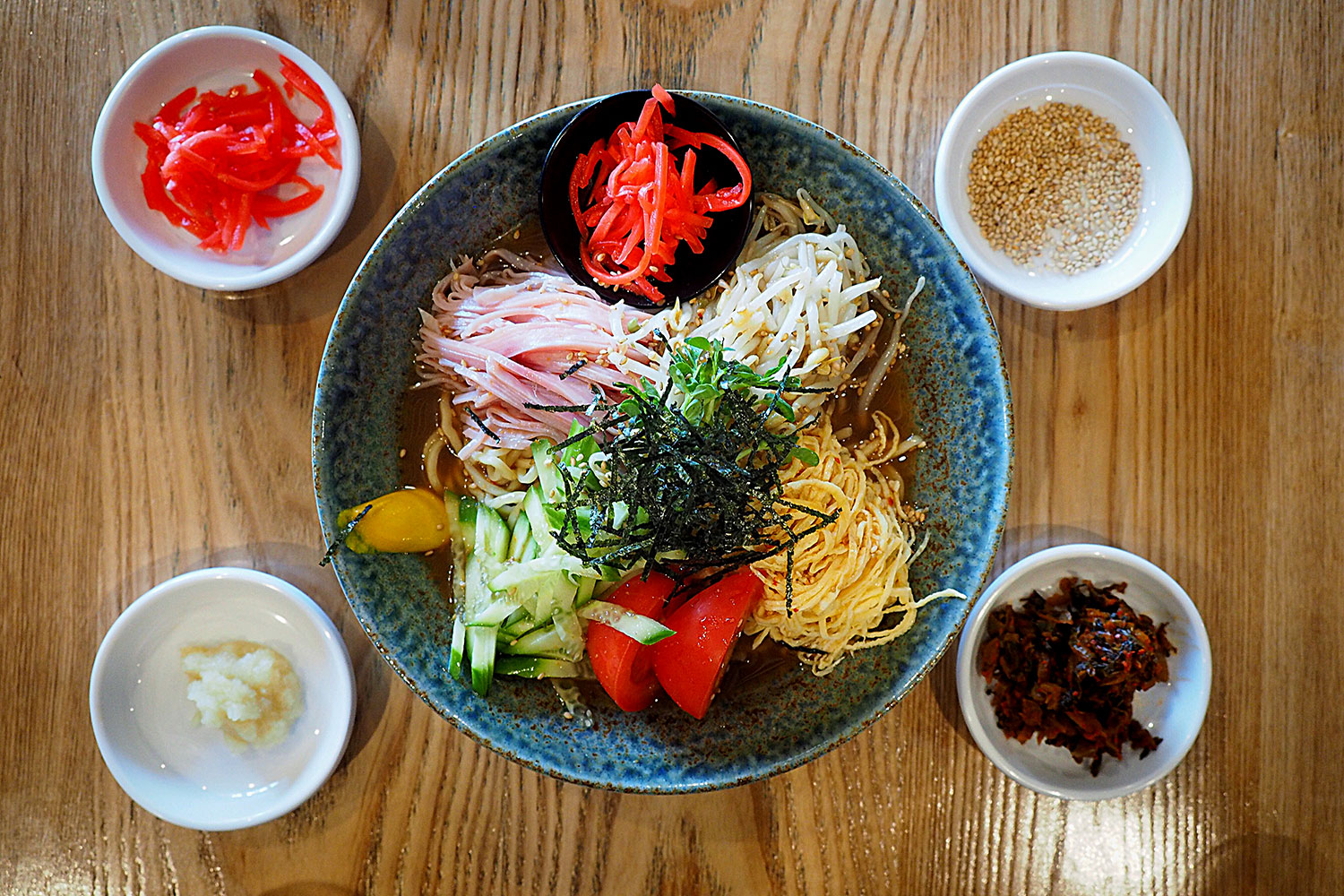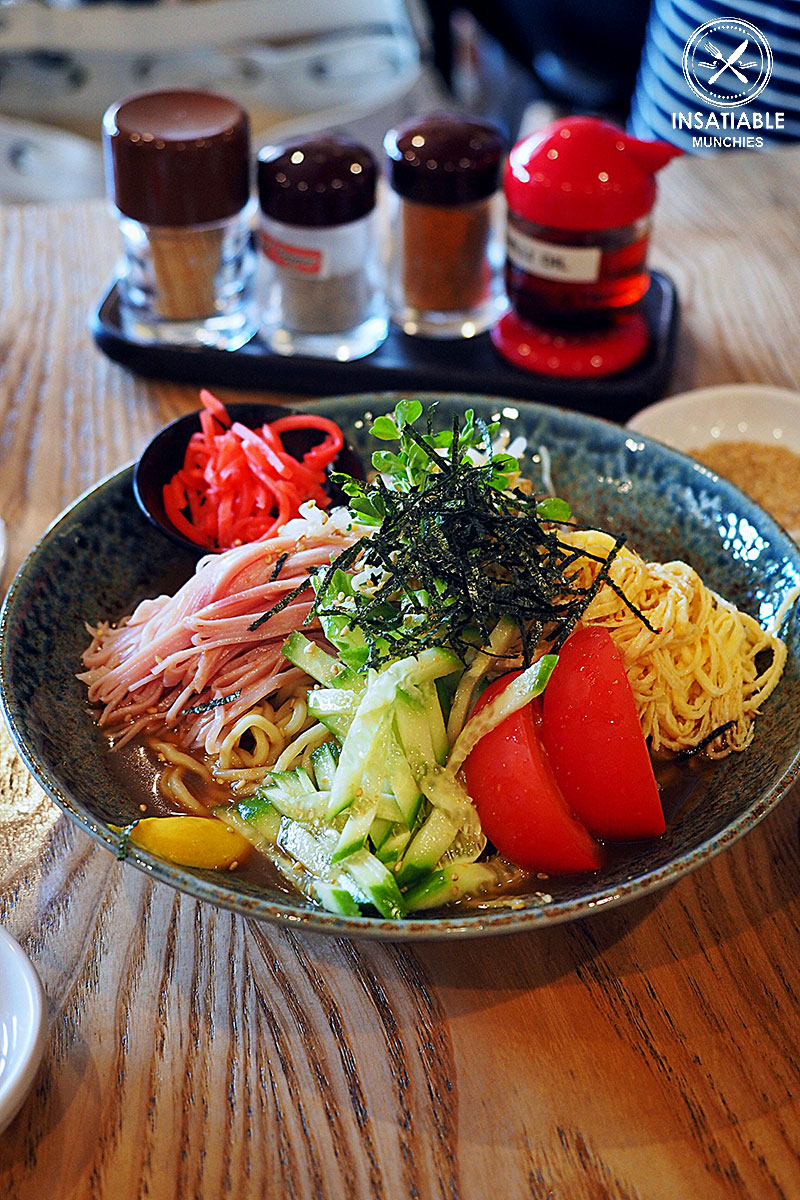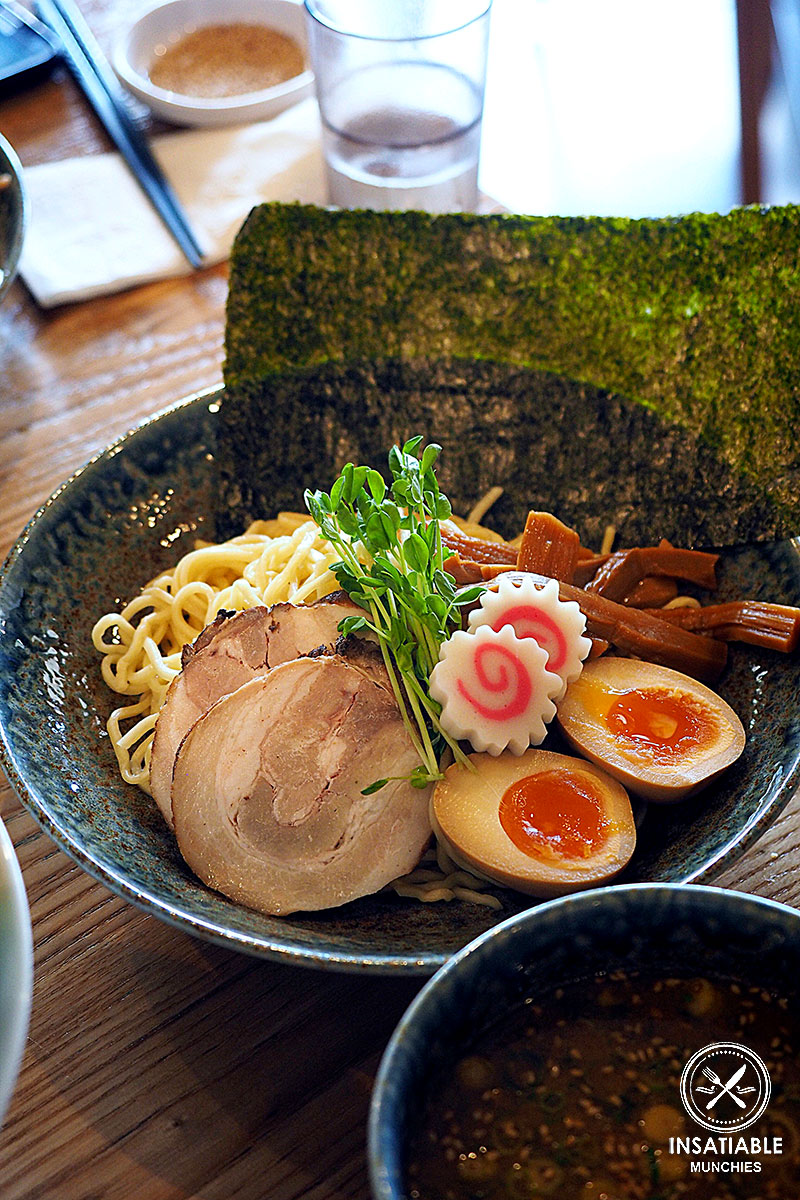If you think I’m crazy for going to eat ramen in the middle of summer – heck, even I think I’m nuts – then I must be certifiably insane. But good food does wonders, and, as my second afternoon in a summer at Manpuku will attest, really good air-conditioning.
Yeah, 40C heat ain’t got nuthin’ on that air conditioning.
The Order:
Kono Deaini Kanshashite Aijou To Jonetsu Konete Isshoukenmei Tsukutta Uchirano Icchan Sukina Manpuku Shiawase Ramen, $14.90 (with extra ni tamago)
Soy based pork and chicken soup. Pork belly, bean sprouts, bamboo shoots, shallots, seaweed sheet with wavy noodles.
Tsukemen, $15.90 (with chashu instead of softened pork rib)
Soy based tokotsu sour dipping soup. Softened pork rib, bamboo shoot, eggs, ultra seaweed sheet and shallots with wavy noodles.
Hiyashi Chuka, $13.50
Cold noodle with chicken soy based sour soup. Comes with ham, cucumber, bean sprouts, egg, tomato, seaweed, snow sprout.
The Food:
When a ramen place has three different types of noodles for their different ramen, you can bet that the choices they make is deliberate, and not much is left to fate.
Chef Suzuki – who got head hunted from another ramen restaurant for those skillz- tells me that Manpuku works with a noodle master, who suggests the best noodle type for that particular soup. A tonkotsu, for example, works best with a dried noodle that provides the best al dente texture that will stand up to such rich broth.
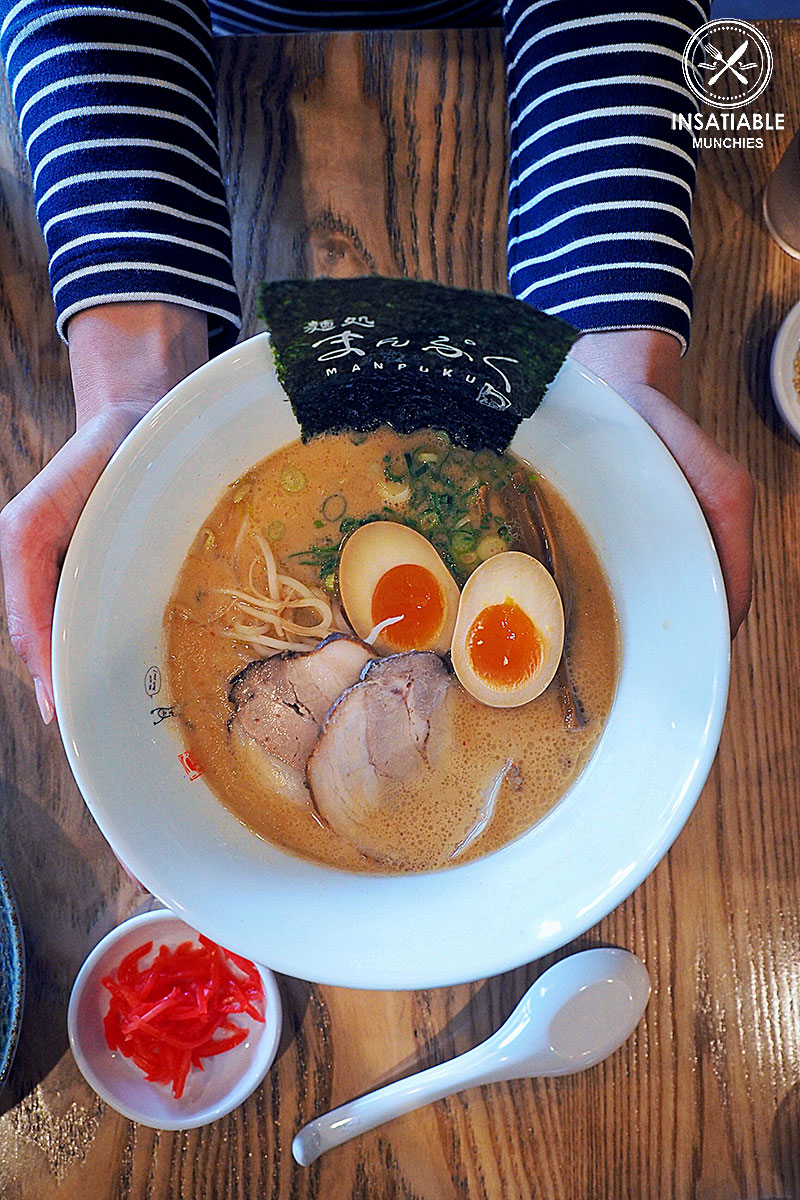 Kono Deaini Kanshashite Aijou To Jonetsu Konete Isshoukenmei Tsukutta Uchirano Icchan Sukina Manpuku Shiawase Ramen, $14.90 (pictured with added egg)
Kono Deaini Kanshashite Aijou To Jonetsu Konete Isshoukenmei Tsukutta Uchirano Icchan Sukina Manpuku Shiawase Ramen, $14.90 (pictured with added egg)
Our first bowl of ramen was the Kono Deaini Kanshashite Aijou To Jonetsu Konete Isshoukenmei Tsukutta Uchirano Icchan Sukina Manpuku Shiawase Ramen, also affectionately known as the Long Name Ramen. And you know what, the name was not the only thing that was a mouthful. (Heh? Geddit? Ramen joke) The soup was a great middle ground between the pork and the chicken, rich without being unctuous, with plenty of delicate flavour throughout. And if, like me, you yearn for something a bit less delicate, then I would suggest adding the garlic paste for bonus points. Fresh garlic is blended with drinking sake to mellow it out slightly, and it brings an amazing Victoria-Secret level body to the soup.
The Hiyashi Chuka, on the other hand, was very much my speed. Springy cold noodles get topped with finely sliced ham, egg, cucumber, seaweed, tomato and bean sprouts, and tossed in a chicken stock/soy/mustard dressing. I swear, if this is a typical salad, no one would ever complain about eat salad ever again. It was tangy, refreshing, and just so SO moreish. Chef Suzuki says that the sourness means that he never gets tired of eating this noodle, and I’m inclined to agree. It felt so light on the stomach, and my palate was partying with such a riot of flavours that I just kept eating till well beyond the point that I was full. Shame that it’s only here for the summer season, though. Personally, I’d find a reason to eat this all year round!
We also tried the new and improved Tsukemen, with a less salty gravy/broth for you to dip your noodles into. This time, we also had the chashu (sliced rolled pork) instead of the softened pork rib like the last time, but I must say, if I had to do all over, it’ll be the pork rib again…and again, and again. There’s nothing like a first love, huh.
The Service:
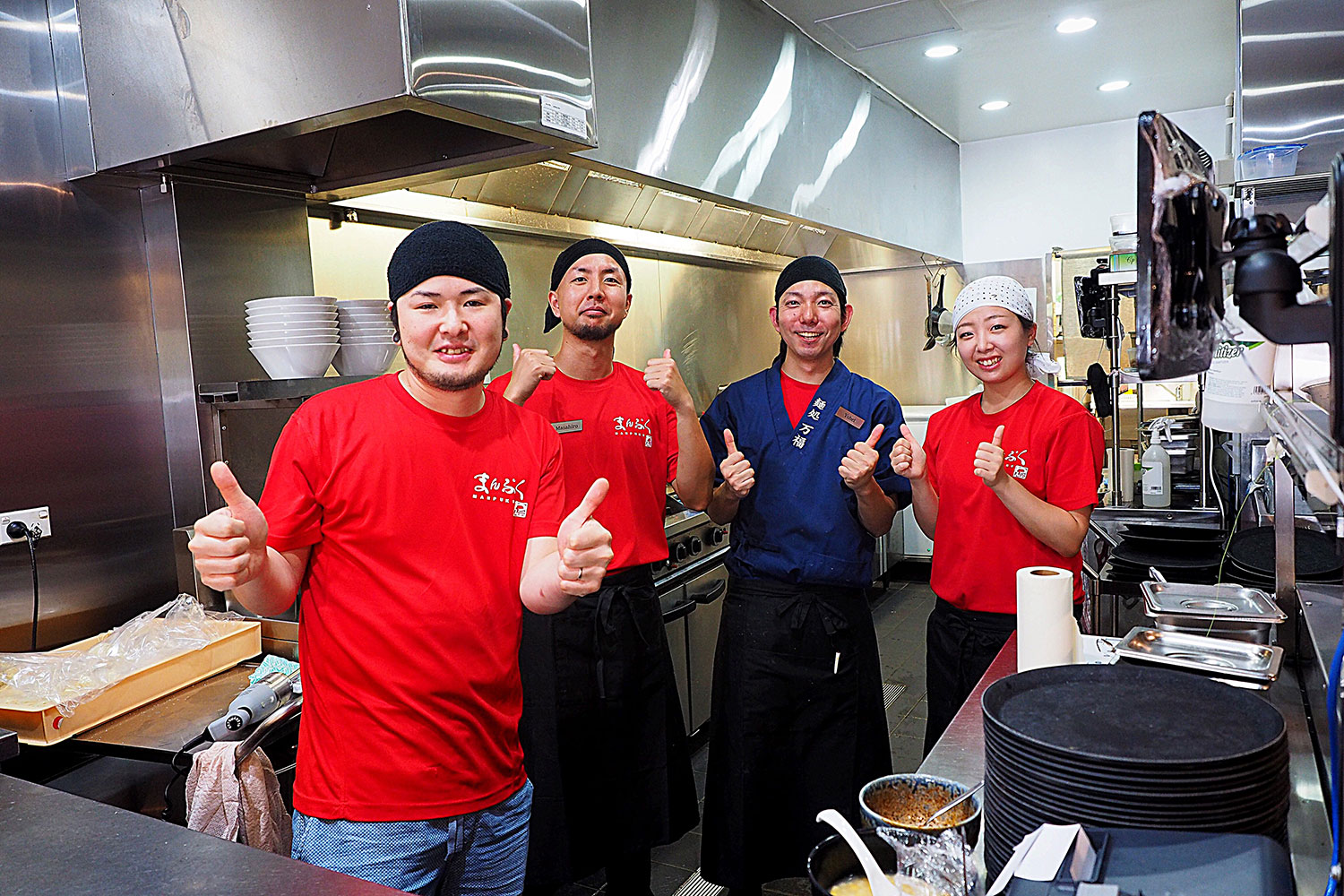 Chef Suzuki (left) and his team
Chef Suzuki (left) and his team
I know it’s not the fairest thing to say, since I was invited as a guest, but if you can, have a chat to Chef Suzuki, because that just augmented my experience and made me hyper aware of every element of love that went into the deceptively simple bowl (bowls!) sitting in front of me. Knowing that the soup, for example, takes at least six hours of simmering to perfect, or that the noodles are rolled thrice with a $100,000 machine to give you that body and texture, just makes me thankful for all the labor that goes into creating the ramen experience at Manpuku.
He even told me that he tried pressure cooking the stock to speed up the process, but that created a “brown” smell (from the Maillard reaction) that he wasn’t after. How cool is that?!
Otherwise, I like the efficiency of service still, much like the last time. Ramen still came out at lightning speeds, and the staff were polite and lovely across the board. Nothing out of the ordinary, but super pleasant, like the last time we were there. ?
Value for money:
We always knew that the ramen here isn’t the cheapest around, have you seen the portions?! It’s huge! I know you can probably get a cheaper lunch elsewhere in Chatswood, but for the portions that you’re getting and the quality, I think it’s a pretty good bang for your buck.
Also, I only just realised how many items there actually are on the menu, so there’s lots of variety and something for everyone! Score.
The Vibe:
It’s still super chill, and the the vibe is still really relaxed. Maybe it’s the 40C day that we rocked up on, but it’s totally the place that you rock up in shorts and flip flops, and have a casual bowl of noodles.
And they still yell random things whilst cooking your ramen. Tee hee. How’s that for atmosphere?
And finally,
I’ve always known that ramen broth takes forever and that there are different noodle types for your soup, so in that sense, Manpuku isn’t reinventing the wheel here. But I’m sure there are plenty of ramen shops that don’t spend the time, and for that I’m grateful still.
It’s also really interesting that Chef Suzuki, like Chef Haru of Ramen Ikkyu, has a fine dining background. It gives him a different understanding of how to balance flavours, and brings a new perspective to a very traditional art form. To quote him, there is no right or wrong ramen: it is an art form, and his experiences allow him to express the art in different ways.
Oh and if you’re wondering what a chef who is around ramen all day every day eats?
Cereal. Chocopops, to be exact!

